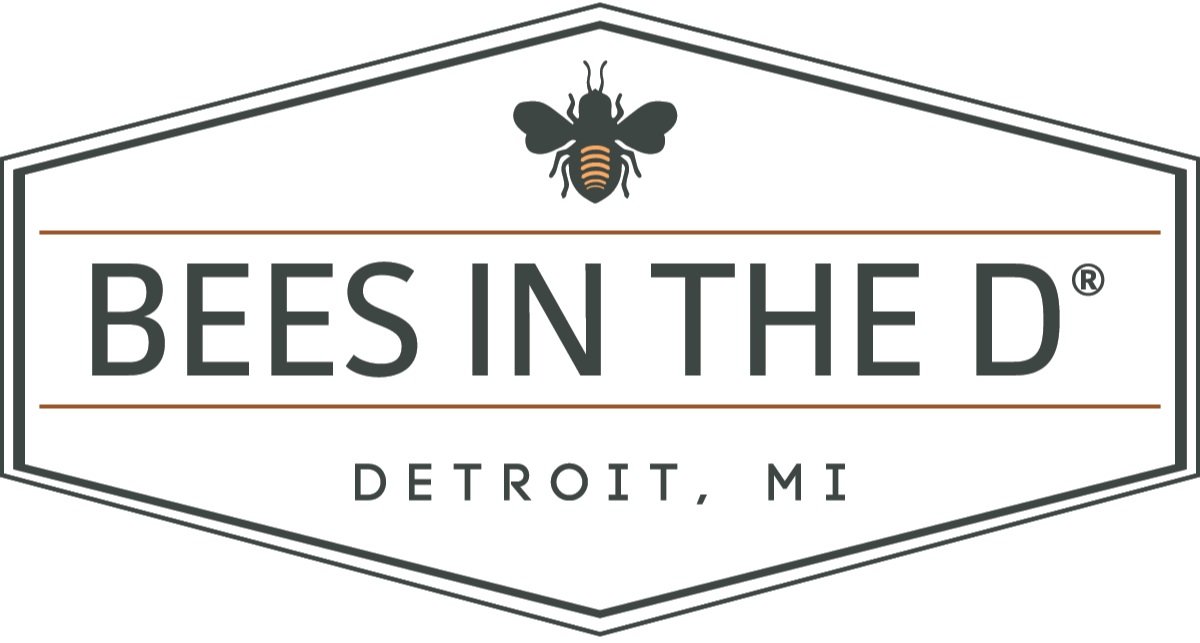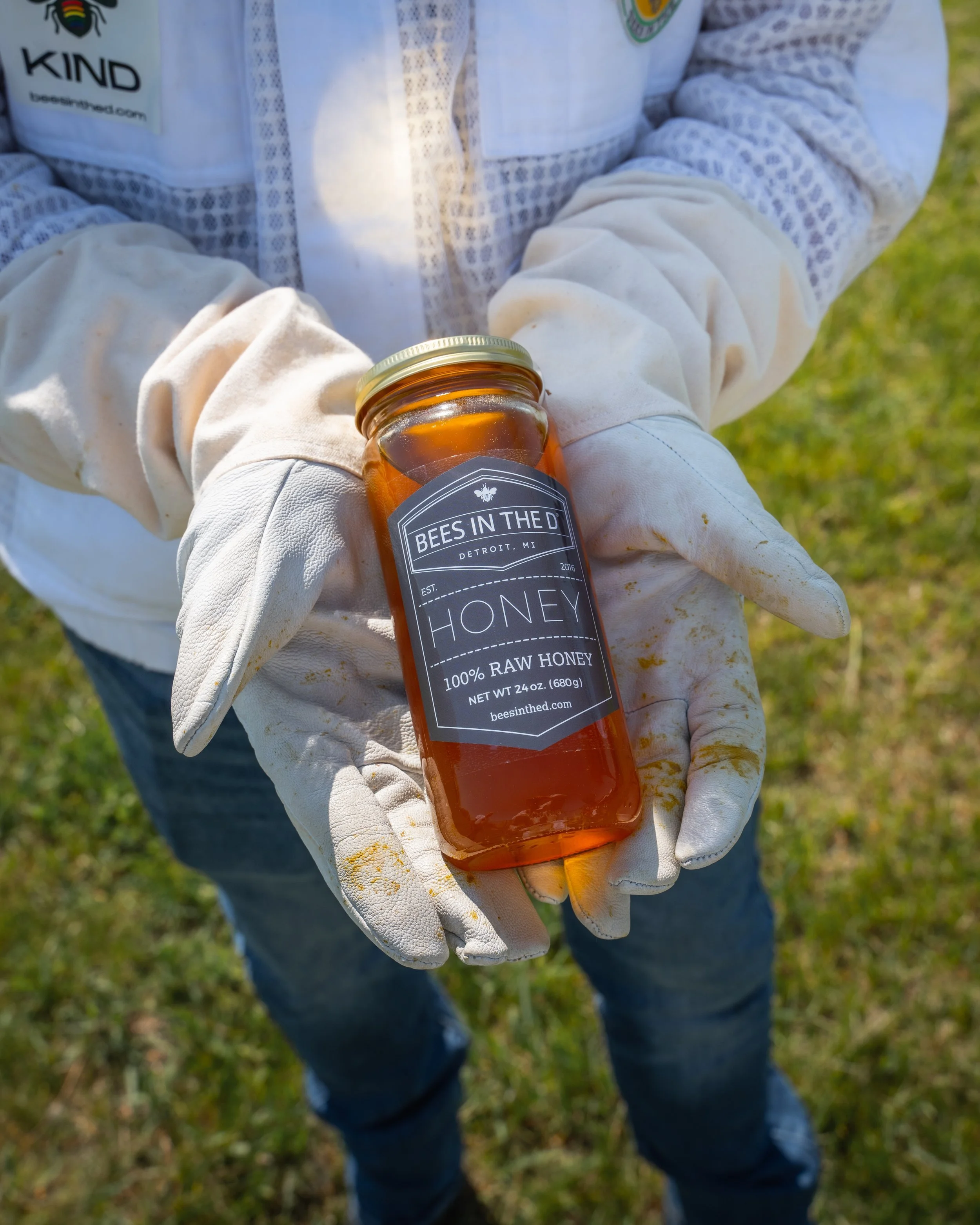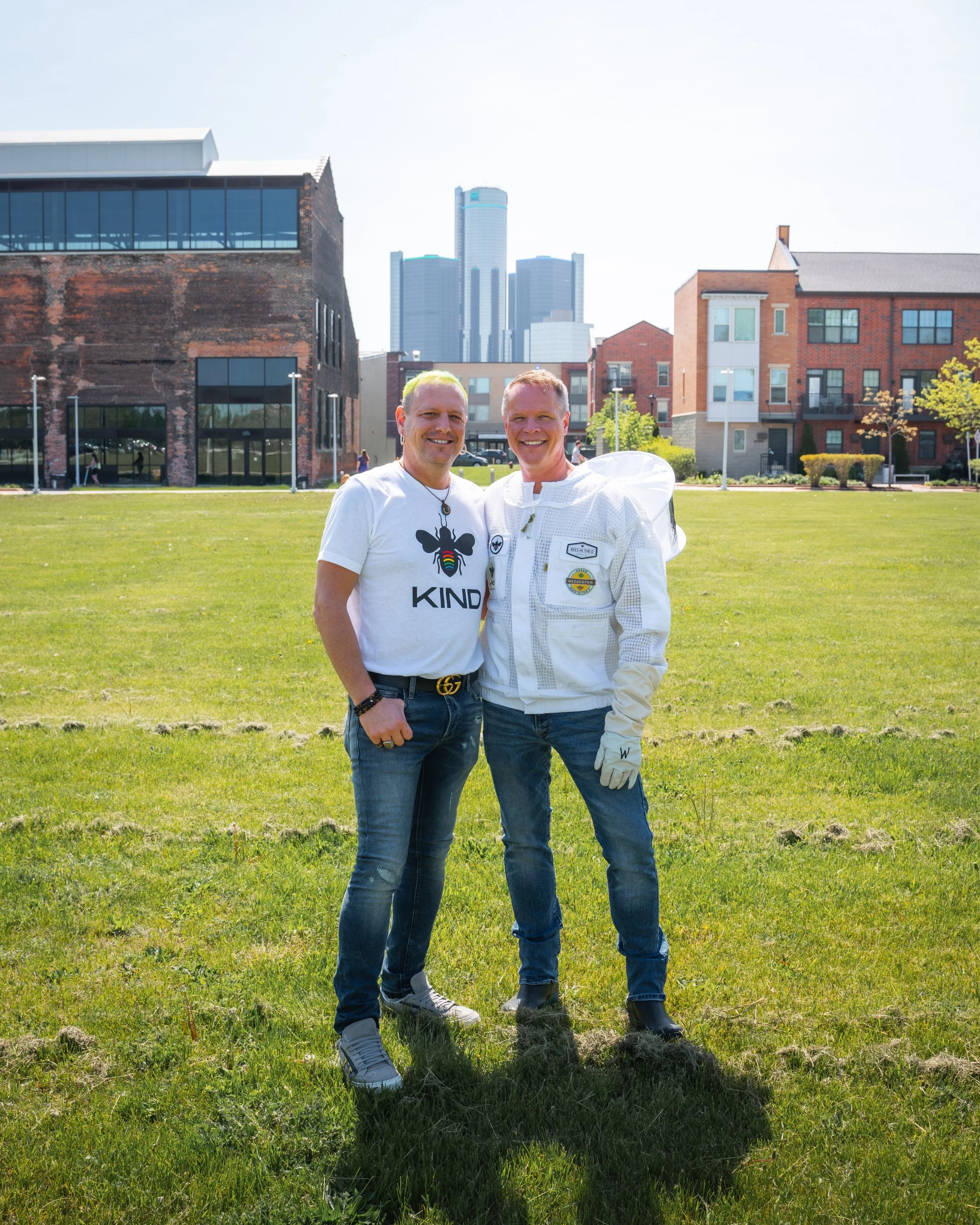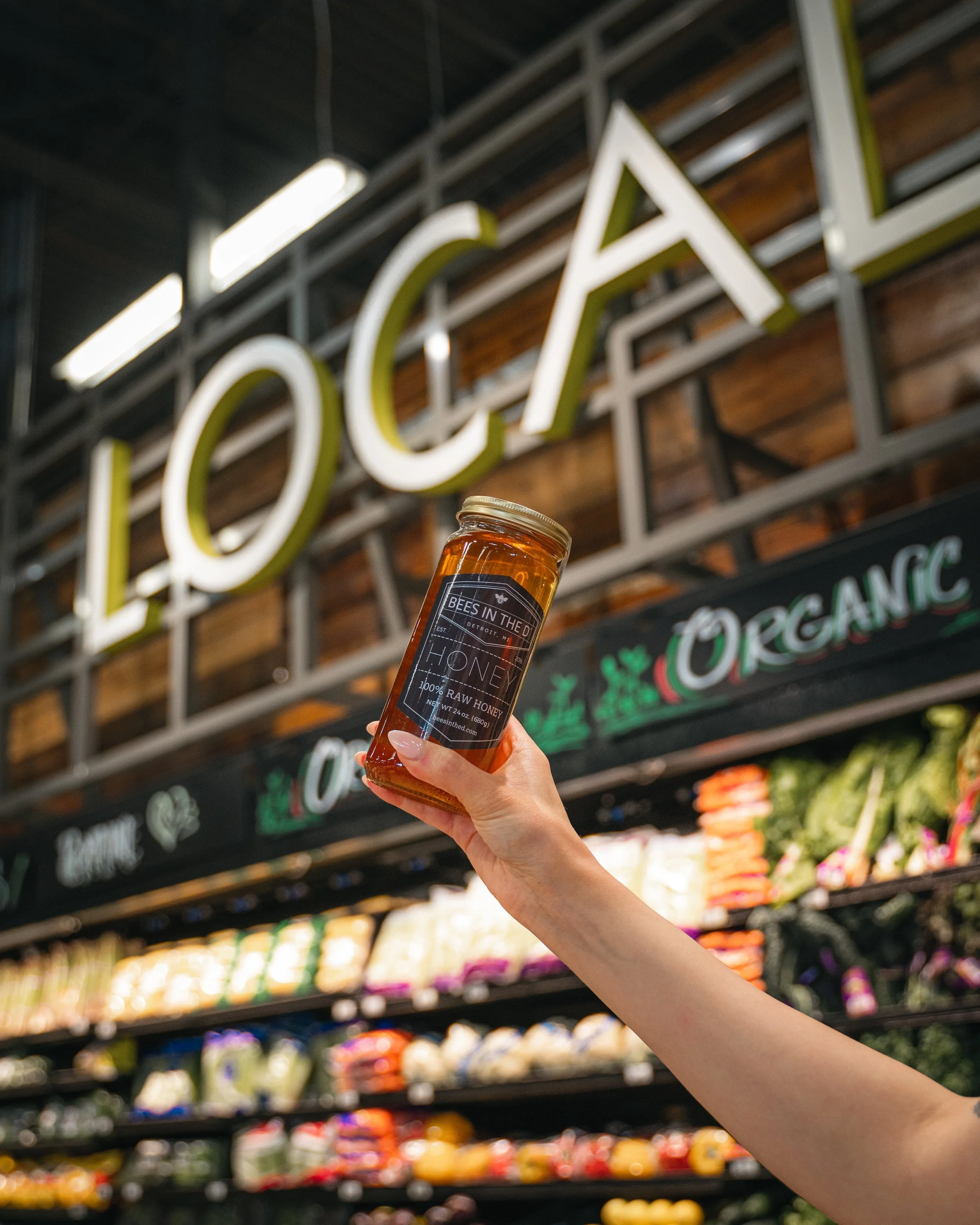MEET THE MAKERS, MADE IN MICHIGAN: Meet Bees in the D!
WRITTEN BY PAMELA PATTON
Photo by CR Productions
“Bees in Detroit?”
That’s a question that’s often asked and one that Brian Peterson, co-founder of Bees in the D, is eager to answer. “You’d be surprised, but urban bees outperform rural and suburban bees, and Bees in the D has placed more than 225 hives at 75 urban locations. An urban landscape provides diverse plant life because of green roofs, decorative planters, and vacant lots. And bees fly up to five miles a day seeking our nectar, so bees can and do thrive in Detroit and other cities such as New York, San Francisco, and Boston.”
But let’s back up a bit about how Brian Peterson and his husband Brian Roest founded Bees in the D, a non-profit organization.
Said Peterson, “I’m an elementary school teacher. That’s my regular job; I just finished my 24th year in Rochester, and I taught 22 years at the Brick and Mortar at Musson Elementary. About 15 years ago, the Garden Club of Rochester wanted to send a teacher to Beaver Island to learn beekeeping. I’ve always been known as the nature guy in our building and district, so the science coordinator reached out to me, I signed up and fell in love with beekeeping. And in the last two years, Rochester decided to keep their virtual campus going, and I enjoy teaching virtually because I can take the kids into the hives.”
Then another “B” came into Brian Peterson’s life. “Along came a different bee in my life, the other Brian, Brian Roest. “I was living in Lake Orien at the time, so we’ve always joked that we’re a “Green Acres” couple. I’m the country boy, and he’s the city boy.”
About ten years ago, the “Bs” decided to move to Detroit and founded Bees in the D in 2016. A non-profit organization, Bees in the D educates on the importance of pollinators and honeybees by engaging guests with live in-hive tours. Peterson said, “The name was already in use by our friends who would say, ‘Hey, let’s go visit the Bs (Brian and Brian) in the D.’ We just added two Es.”
“We love Detroit; we just love being in Detroit.
— Brian Peterson
“…And oddly, several years ago, I was walking in Chene Park along the river, and tryouts were being held for Wheel of Fortune. I ended up being on the show and winning a bit of cash, but the exciting part is that Vanna did a segment on Bees in the D in her segment, After the Wheel. That helped spread the word,” Peterson said.
How the Bees Came to the D
Peterson loves that he and his husband moved to Detroit, but he missed his bees. He had a few hives still up in Lake Orion that he had moved to his neighbors. So, he asked a friend who owned a bar on Jefferson (now a different business) if he could put some bees on their roof, and they agreed. Soon, word got out, and hives were placed on the green roof of the Convention Center, and in nearly no time, Bees in the D went from just six hives to 225 in 75 locations across five counties.
When You Have Bees, You Get Honey
Bees are probably the most industrial creatures on this planet, but people don’t realize the whole reason that bees are going out and collecting nectar to make honey is because bees, unlike most insects, don’t hibernate in the winter or die out in the winter. Instead, they form what’s known as a winter cluster, vibrating their body segments to create friction, which creates heat. And they keep the queen at about 90 degrees in the middle of this ball of bees all winter. But they need energy to do that. And so that’s why all summer long, back and forth, they’re filling their cupboards (hives) with enough food for the winter. -
Peterson explained, “Luckily for humans, bees are much more productive than they need to be. I leave about 80 to 100 pounds of honey in every hive for them to eat in the winter. The hives are boxes, so I leave all the honey in the lower boxes where the queen lives. I don’t mess with that. That’s theirs. But if they go up into what’s known as honey supers or mediums and draw those out and fill that out with honey, those are the ones that beekeepers can take.”
“Beekeepers have to be very careful that we’re respecting the bees and their supply. You can’t get greedy as a beekeeper.
— Brian Peterson
Peterson continued, “Sometimes bees only produce enough that they need for the winter. And that’s okay. We’re not necessarily in the honey business, but if they’re making the extra, we’re going to take advantage of it and then harvest that and be able to sell it to fund our organization.”
Oh, Honey
“Fun fact about our honey is we don’t mix our harvest. Most commercial beekeepers take all their honey and put it in a giant vat, mix it, and sell it, which is awesome. It’s raw honey. It’s good for you. It’s from the bees. But at different times of the year and locations, bees go to different flower sources. And every flower source’s nectar has just a little bit of unique and distinct flavor.” Peterson said.
“And that’s what’s fun about our honey. It’s much like wine. Every jar each year will taste different.
— Brian Peterson
“In the spring, honey tends to be much lighter. Because the black locust trees were incredible this year, bees gathered a lot to create very light and floral nectar. I love the honey from the Convention Center because its bees stay on its green roof because of the sedum blooms, which creates honey with a cinnamon-flavored tinge. Later in the year, when the fruit trees bloom, the hives at Blake’s Orchard in Armada yield fruity-flavored honey, and in the fall, goldenrod and asters result in a dark caramel flavor,” he explains.
How can a honey connoisseur know where a jar of Bees in the D honey came from? On the side of each safety seal is a handwritten code. For example, OAC means the honey was harvested near the Outdoor Adventure Center, which is right down the street from the Rivertown Market in Detroit.
Keepin’ the Bees Buzzin’ at Woodward Corner Market
The buzz around Bees in the D honey was growing, and soon, a representative from Meijer’s Rivertown Market asked about carrying it in-store. Bees in the D took advantage of the opportunity to educate people about the organization. “We had black T-shirts that say Worker Bee on the back, and they loved them so much that we created a co-branded T-shirt that had the Meijer logo on one sleeve and the Bees in the D logo on the other, and across the back, it said Worker Bee. We wore them for about two months. It was a great opportunity to share our story,” he said. Soon, Woodward Corner Market started carrying the product as well.
Made in the D
Unfortunately, beekeeping was becoming a dying practice. The cheap so-called honey drove the price of raw honey down, making some beekeepers abandon the somewhat expensive activity. But now, a surge of backyard and hobbyist beekeepers, as well as organizations like Bees in the D, are helping keep beekeeping alive. And people are starting to be educated and supporting their local beekeepers. Peterson said, “Look at Woodward Corner Market. All these local foods! And people are supporting small businesses and local farmers and producers. It doesn’t get better than that.”
According to Peterson, Detroit is becoming a leader in urban beekeeping as people seek more opportunities for sustainability and local products. And recently, there has been a push to elevate the status of honey. Because not only is it a superfood, but it’s also the most preservable food on this planet.
“Honeymaking is not a simple process. What these insects do for us is downright mind-boggling.
— Brian Peterson
“…The bees have opened up some amazing opportunities for me. I owe the bees so much because they’ve allowed me to be a guest at the White House and meet President Obama. They’ve allowed me to become an adjunct professor at Oakland University, where I now have an apiary (which refers to a location where multiple hives are kept). The bees have allowed us to go to Argentina to bee keep and hopefully Costa Rica soon,” Peterson said.
It’s safe to say that the Bees in the D and its honey will be creating a buzz for a long time.
You can find Bees in the D at Woodward Corner Market!








